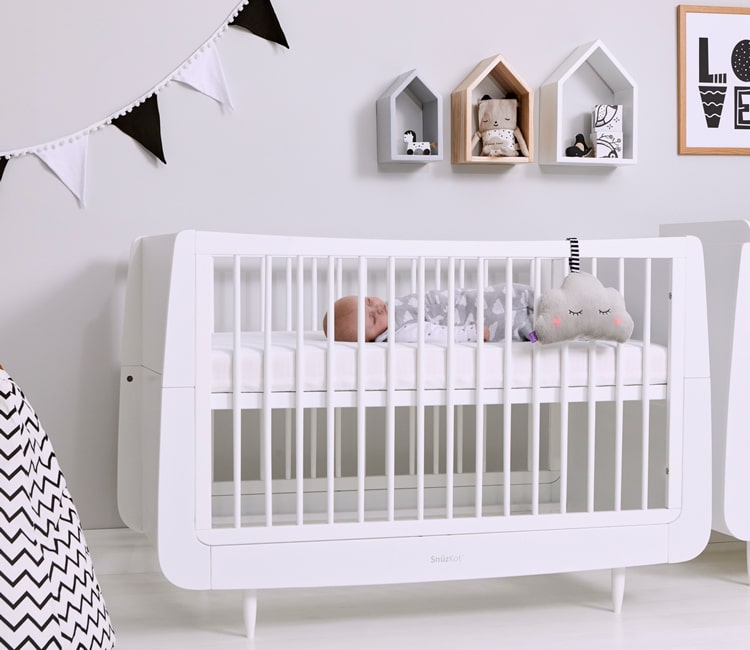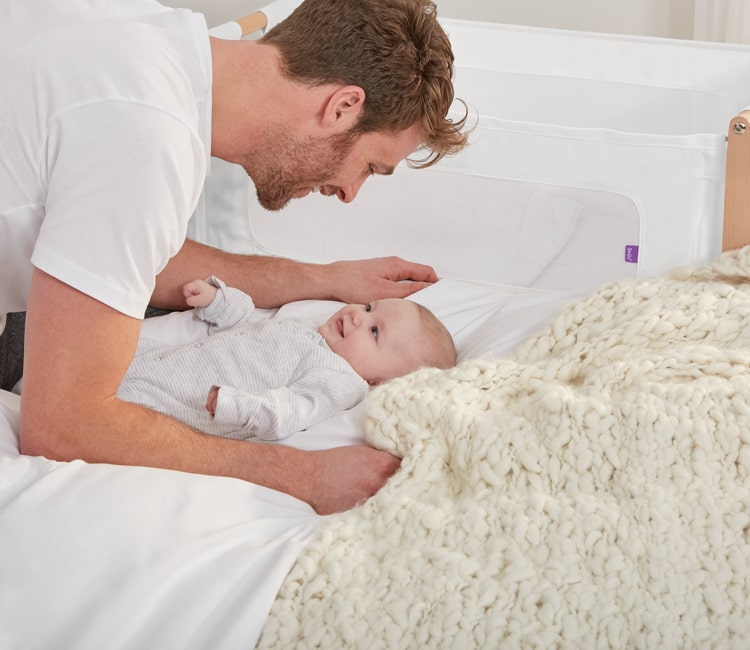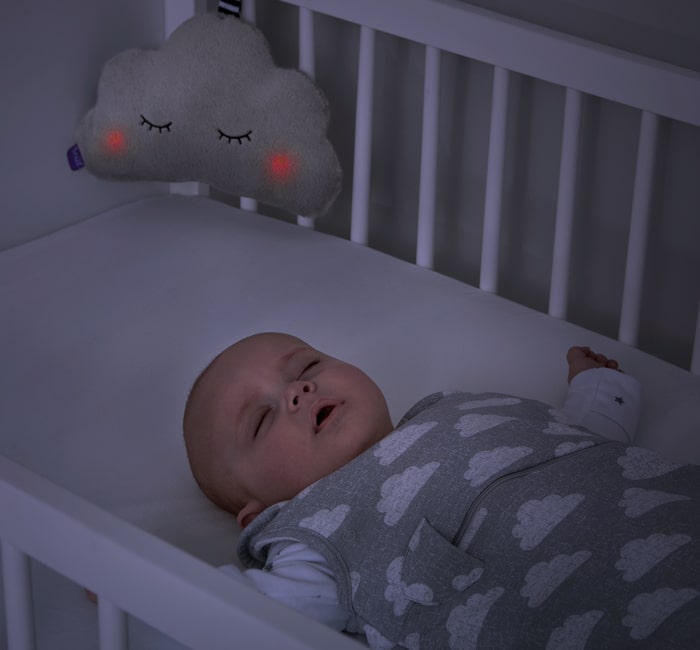Getting Your Baby Into a Good Sleep Routine
For the first few months after birth, your baby will sleep and wake around the clock. By around 4-7 months your baby should have learned how to self-soothe, allowing them to snooze for longer stretches at night. Once your baby hits this age, it’s a perfect time to start creating positive associations around sleep and bedtime.
For the first few months after birth, your baby will sleep and wake around the clock. By around 4-7 months your baby should have learned how to self-soothe, allowing them to snooze for longer stretches at night. Once your baby hits this age, it’s a perfect time to start creating positive associations around sleep and bedtime.
Getting a solid bedtime routine nailed down at this age can make life easier in the months and years ahead. You can try to implement a bedtime even sooner if you like, but typically routines such as these won’t start to stick until around 4 months. So, here are my top tips on how you can help your little one successfully drift off, as well as ensuring you have a great night’s sleep, too!

Choose the Right Bedtime
Some babies are night owls, while others will be ready for bed by dinnertime. Watch for signs of sleepiness and follow your baby’s lead. There is no perfect time, but between 6:30 and 7:30 p.m. tends to work for most babies. Try to keep to the same time every night so your baby comes to know what to expect each evening.
Your Baby’s Bedtime Ritual
It’s very important to develop a routine that is calming, consistent, and short. At first, simply singing your baby a song or giving them a cuddle while you rock them in your arms might suffice. Over time, you can introduce some of the tried-and-tested techniques, like an evening bath or reading a story.

Experiment to see what works, but be sure to do it in the room where your baby sleeps so they can easily make the connection with bedtime. Also, if both parents take turns with the baby bedtime routine now, your child is less likely to want or demand to only be put to bed by mummy when they reach toddlerhood.
Keep Your Baby by Your Side
Babies need to feel safe and secure, and this can be easily achieved by being in close contact with their parents. During the first six months when your baby is learning how to self-soothe and settle to sleep, having you nearby and being able to see you is going to be extra important. This is where the SnuzPod Bedside Crib is the perfect solution, enabling you to both easily see each other through the breathable mesh sides, and effectively co-sleep in a safe and comfortable environment.
Darkness Promotes Drowsiness
While this may seem obvious, many parents worry that their little one will be afraid of the dark. In fact, babies actually find darkness extremely comforting and calming, as they've been accustomed to it for the past 9 months in utero.

Darkness is best for getting your baby’s body into sleep mode, as it encourages the release of melatonin, a hormone that helps the body transition to sleep. If you prefer a little light to keep from stubbing your toe when you go in for late-night feeds, opt for the SnuzCloud Baby Sleep Aid. The only baby sleep aid to have two light options, its soft white light is ideal for feeding in the dark, while the calming pink glow is designed to mimic the ambience of the womb and is an extremely comforting colour, particularly during the fourth trimester.
Reduce NightTime Stimulation
When your baby wakes during the night for a feed or a nappy change, try as much as possible to keep to the same routine you use at bedtime to settle your baby back to sleep. Avoid over-stimulating your baby with bright lights, noise, and talking. You should also try and make nappy changes as quick as possible so you can get your baby back down to sleep. SnuzPouch is ideal for this, allowing for minimal disturbance during night-changes with its unique nappy change zip.

Put Baby Down Drowsy
We all sleep in cycles throughout the night, and babies typically stir every 40-50 minutes. If they wake and realise things aren’t the same as when they drifted off, they’ll likely cry out to alert you that something is different and potentially wrong. Your child is much more likely to learn to drift back into a deep sleep if things are unchanged when they stir. So, the trick is to put your baby down to sleep in the crib when drowsy but still awake, so they learn how to drift off to sleep themself. Eyelids should be heavy—not shut!
Stay Flexible
While consistency is key, your baby bedtime routine shouldn’t be written in stone. A rigid ritual probably won’t last for too long, and as your baby grows, so do their needs, as well as their likes and dislikes.
You’ll find the baby bedtime routine that worked last week won’t necessarily cut it this week. Those evening baths that used to be so soothing, could suddenly become a raucous playtime. Adapt with your baby’s changing needs, and above all, be patient and persistent as your child learns their bedtime routine and preferences.



























